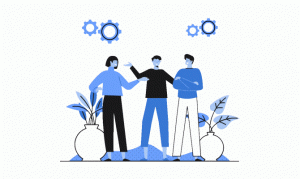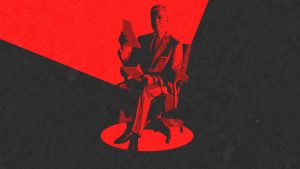Think of a time when you couldn’t read your email.
Not because you didn’t want to, but because you physically couldn’t do it . Maybe the WiFi was down, your computer was out of juice, your phone was being repaired. Maybe it was while on a flight? During a short camping trip? At your childhood home in the woods?
Offline is the exception. Being constantly connected is the norm.
Despite this new normal, for some reason, we still talk about “ecommerce” as if it is something separate and distinct from “real” commerce. This “ecommerce” thing is the all-powerful, mysterious Oz, pulling levers and working disruptive magic. Every day, another major retailer claims online shopping, showrooming, and free shipping are killing retail. Ecommerce is full of crazy new ideas like omnichannel, B2B2C, ultra-streamlined logistics, social selling and so on.
O RLY?
Let’s pause for the moment.
The 1908 Sears Roebuck catalog had every strategy necessary for a successful retailer today, in the year 2016.
- Omnichannel? Yep. They had a wildly successful catalog and physical presence in their own stores, general stores, at state fairs and pretty much everywhere else.
- B2B2C? Of course. Manufacturers took orders via Sears who brokered the information, transactions and delivery logistics.
- Social? Check! It says right on the cover, “Please Show this Catalogue (sic) to your Friends and Neighbors” — a 1908 version of the “Share This” button.
- Delivery logistics? Are you kidding? There was nothing like it! You could buy a wood stove, clothing, a car, live chickens, or even a house and Sears would get the goods to you by any means necessary — rail car, horse and buggy, hand-carry — whatever could move goods, did.
So why, today, is Sears circling the drain like so many other retailers struggling with ecommerce?
Maybe this is because buying stuff via an internet-connected device is called ecommerce — not simply commerce.
What’s in a name? Maybe more than expected. One of the oldest tropes in mythology is how the act of naming someone or something imparts or removes power. It’s as if the naming of the thing sets the future path, be it good or bad. Calling the act of shopping via an internet connected device ecommerce predetermines its destiny to be limited to only online. Instead of calling it was it really is—commerce—it now has mystery, power and boundaries.
That one letter —e — made finding and buying things online something distinct, something separate, and perhaps a little abstract as compared to the “real” commerce business being done in stores.
For some, ecommerce was a distraction from the bigger picture. The Borders bookstore chain famously outsourced selling books online to Amazon: visitors to borders.com were simply re-directed to Amazon. Though Borders tried to course-correct several years later, the outsourcing was cited as a top reason for their bankruptcy.
Some retailers saw ecommerce as a slightly threatening nuisance, and put into its own “separate business unit” box to protect the “real” business. Often, these retailers would use a rather perplexing strategy of leveraging ecommerce to primarily to “drive in-store visits and sales,” thereby reducing any hope of the “e-business” proving its potential value.
Perhaps the most curious ecommerce strategy is when they want their customers to shop online via in-store kiosks for widely available merchandise they display but don’t stock.
Touted as a way to provide customers with an “omnichannel experience,” these retailers seem to have forgotten why the customer is in their store in the first place: to buy (and take home) their stuff! Retailers have further divided the customer experience; online and offline disparities are now more prevalent than ever.
At what point did retailers lose focus on the customer? Customers don’t stop to think what drove them to a website, what device they’re using to shop, or if they’d prefer to go into a store. They’re simply… shopping.
Much like Voldemort and other villains of folklore, the e-monster has a crucial weakness: its power is limited to a customer experience mediated by the capabilities (or limits) of an ecommerce platform. As it turns out, the core capabilities of any ecommerce platform (FIND-SHOW-BUY) are not magical, they are procedural (and should be treated as such).
Commerce is much bigger than ecommerce. It’s the total customer experience, and retailers are starting to use technology to bridge the gap they’ve helped create.
Think about your last really good customer experience in a physical store.
Chances are, you were greeted by an employee. They might’ve asked you if they can help you find anything, they might’ve recognized you as a frequent customer. They might’ve shown you something that complemented the product you’d been carrying around the store with you, and they might’ve been able to upsell you on that little $ 10 add-on at the cash register.
Now, think about your last really good online customer experience. Chances are, you were thrilled when you found what you were looking for, got a good price, quick shipping, and an easy checkout.
If we kill the e and get back to the roots of commerce, we can start to think of technology as a customer experience enhancement — as well as a business accelerator. We can blend the best parts of the in-store experience with the best parts of the online experience. We’re seeing hints of this in the marketplace — Lowes and Home Depot have both started to reduce the distinction between “in-store” and “online” — they just seek to create a quality customer experience where they can and have invested heavily in a technology ecosystem to support the always-connected customer.
The way to kill the e-monster is to change its game.
There’s no magic bullet in a slightly better shopping cart, visual commerce or any of the other 10,000 tactics discussed in meeting after meeting. The things that will make the e-monster stand down are to stop naming it, obsessing over it and fearing it, and let it fade into memory as we get back to work on doing “commerce” better than the next company.
Martin Focazio co-authored a modified version of this post published on LinkedIn.
Digital & Social Articles on Business 2 Community(47)







